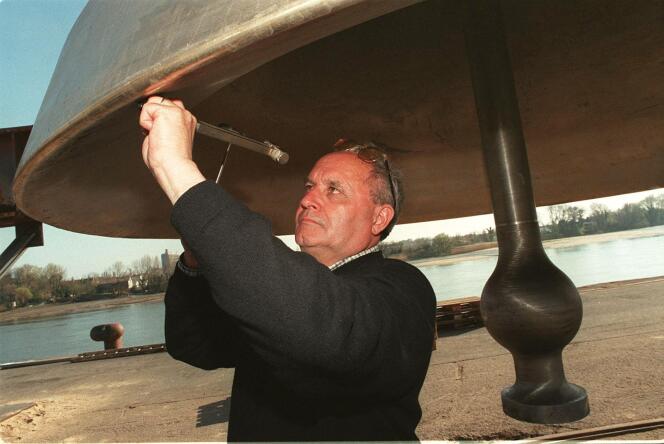


A few majestic swans flew over Lake Annecy, against the backdrop of the peaks of the Massif des Bauges regional natural park. Just a few kilometers from the French Alps, employees at the Paccard bell foundry in the village of Sevrier had been busy since dawn. In a rhythm they know by heart, several workers were pouring molten bronze, an alloy of copper and tin, which will be used to fill the molds of future bells.
Flames billowed from the furnace in stifling heat. Everyone wore aluminum-woven cotton overalls to protect themselves in case of splashes. Several meters above, standing on a stepladder, David Ughetto, 50, meticulously poured molten metal at 1,200 degrees Celsius. This master foundryman with 30 years' experience presides over every stage of production.
Two tattoos on his left arm represent a bell and Rouen Cathedral, whose carillon he helped restore in 2014. "I've got my job engraved in my skin," he joked proudly, praising the "mysterious side of the metal that sparkles during casting."
The hum of the machines never ceased. The molten bronze was poured into bell molds of various sizes: Like Russian dolls, they were lined up on huge steel shelves, where they waited for several hours before being unmolded.
The decorations were made using wax to depict celestial powers, saints or mountain landscapes. These bells can weigh up to several dozen tonnes – the World Peace Bell, the world's largest flying bell, cast by the Paccard foundry for the Millennium Monument Company in Newport, Kentucky (United States), weighs over 33 tonnes (42 tonnes including yoke and clapper).
For seven generations, the Paccard family has been crafting France's oldest bells with unique expertise. This family saga began in 1796. At the height of the French Revolution, when bells were requisitioned and recast by the Republicans to produce weapons, the royalist, anti-revolutionary Paccard family saw bell-making as a form of resistance.
Nearly a century later, in 1891, the family made a name for itself with the manufacture of France's largest bell, the Savoyarde, listed as a historic monument and still enthroned in the middle of the Sacré-Coeur basilica in Paris. Made of bronze, it weighs over 19 tonnes, with a diameter of 3 meters and a circumference of 9 meters. It was cast at the time for the Sacré-Coeur, on the initiative of the Archbishop of Chambéry, Monsignor Leuillieux [1823-1893].
Though they are now fully integrated into the Republic, the Paccard family stand by the fact that they have always been on the side of the Church. "We're practicing Catholics and we've always been keen to keep the Church going in our own way. We contribute to this with our bells," said Anne Paccard, the current managing director, wearing a long dress and a crucifix hanging from a chain around her neck.
You have 69.74% of this article left to read. The rest is for subscribers only.
